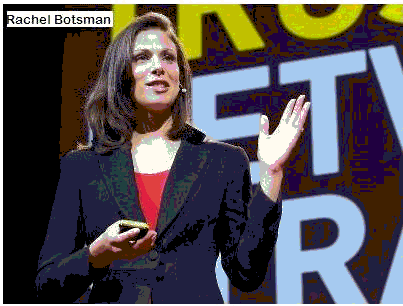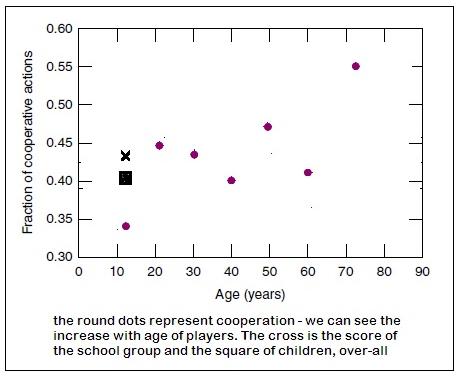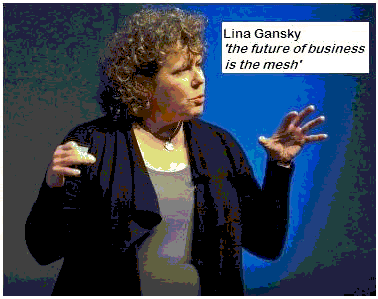Trust has been cited as the currency of the 21st Century, says S.Ananthanarayanan.
As technology supports the marketplace and transactions get transparent, malpractice in trade is getting both difficult as well as not as profitable as legitimate business, which gets done faster than ever before. And more and more deals get made based on trust, with safeguards, but primarily on the assumption that people are on the level. And at the personal level, tokens of reliability that one carries can act as credit cards of great value.
There are now concepts of collaborative consumption, which really amounts to trusting the next person, open source, where developers, particularly of software are giving the moguls, like Microsoft, a run for their money, and the idea of the mesh, where resources, which represent capital, like idle cars, are being shared, to provide service, income, less load on infrastructure and great economy. Writer and speaker, Rachel Botsman, making the case for collaborative consumption, speaks of the experience of residents of Paris allowing an extra room in their house to be used by visitors to the city. There was hardly any use of the system in 2008, when it was started, but now, there is private room being let out in practically every street! While the Internet has made the system possible, what has really changed is that technology has made it possible for people to trust strangers to occupy space in their homes, to the benefit of both and saving for the community.

Mario Gutie´rrez-Roig, Carlos Gracia-La´zaro, Josep Perello´, Yamir Moreno and Angel Sa´nchez, from different institutes in Spain and Italy report in the journal, Nature Communications, their study of how trust and co-operative behavior undergo changes in people as they grow children to adolescents, as young adults and then older. The findings of the study are that while older people are more trusting, the mechanisms usually invoked to explain co-operative behavior are age independent after adolescence, and that special methods need to be developed to promote similar behavior in youth.
In co-operative behavior there is an expectation of reciprocation, and trust arises from rationality – in the belief that co-operation is good economics – and cheating for better returns cannot last. Co-operative behavior is seen genetically wired in, for instance in pack animals, where each one will die for the pack, or in the sexual reproduction of bees, where the female workers surrender motherhood to the queen, as more of each worker’s genes get transmitted when she has sisters, rather than through children. But social programming, rather than genetics appears to rule in situations like the Prisioners’ Dilemma, which the Nature Communication researchers used in their study of human co-operation.
In the classic Prisoners’ Dilemma, the police make an offer to two prisoners, who are kept apart, of degrees of remission if they confess to a crime. If they both confess, they both get light sentences. But if one confesses, while the other holds out, the one that confesses goes free, while the other gets a heavy sentence. And if neither confesses, of course, both go free. The rational choice, for either prisoner, is to confess, as this keeps him or her safe from the heavy sentence, at worst. But the best possible outcome is when both hold out. Hence the conflict – for both to hold out is co-operative behavior, but each risks the heavy sentence if the other should cheat, and to cheat is the rational thing! By and large, the police is successful in solving the crime, except with members of highly organized gangs, or fanatic groups.
The researchers used a form of 4-player Prisoners’ Dilemma game to look for co-operative behavior in different age groups, with the same experiment with players of mixed ages, as a control. The setting for the experiments was the Board Games Fair, a festival at Barcelona in 2012, where multiple trials could be conducted with randomly selected participants and without informing the participants of the study that was going on. Participants were grouped in age ranges of 10–16, 17–25, 26–35, 36–45, 46–55, 56–65 and 66 and over. And then, the control groups, with participants roped in irrespective of their age. It is worth stressing that the games fair was an exhibition and a social event, and the participants neither knew each other nor had training in the kind of game they played.
The results are summarized in the table. As the object was to find reasons, like past behavior, that influence a decision to cooperate ( C ) of defect ( D ), the averages taken are of the length of a sequence of a kind of decision. As results at the Barcelona fair showed that young children behaved differently, the experiment was also done, for verification, with children of 12-13 yrs at a school.

The tendency to cooperate can be seen to increase with age in the second table:

Analysis of the sequence of the previous behavior of all players is reported to show that while mature players do cooperate, the behavior of children and adolescents is marked by dependence of the current decision on previous action and also response to peer behavior. “Admittedly, children have not developed cognitive and strategic abilities related to social and moral implications…” the authors observe.
But the study reveals, as the authors say, that “mechanisms such as reputation and reciprocity, which are based on social perception, might be universal for humans, that is, they are not relative to the age of the individuals.” And looking at the behavior, termed, ‘moody’ of children, the report suggests specific strategies be devised and employed to promote consistent, pro-social behavior. “…fostering the participation of older individuals in the key social decisions or collective negotiations and keeping them longer in the workforce may be judicious procedures,” the authors say.
The more selfish, simple reasoning of young minds may, of course have its value in learning to survive and be responsible in cooperation and trust later in life. The role of mature and clearly more successful advisers, as parents and superiors, is already firmly in place. In organizations too, while older workers may be the more co-operative, the creativity of younger persons motivated by simple self interest may not be worth losing.
But for all that, technology today seems to be doing what is needed to consolidate co-operation and trust in human relations. While conscious co-operative behavior is predominantly the factor in human societies, as compared to other species, the pressures of modern life, growth of population, the energy crisis, global warming, are moving humans, of all ages, to share and cooperate in ways unthinkable a few years ago. The Internet and social media have removed barriers of distance, the cell phone has put us in contact with the rest of the world (“except the person beside you, she is busy with her cell phone”, says Lisa Gansky, entrepreneur, investor, speaker and author of the bestselling book, The Mesh, which describes the concept, for instance, of capitalizing idle time of your car), and co-operative living is taken as a given.

And while trust becomes the watchword to deal with the millions out there on the web, there are tools, like Timerepublik, a resource trading platform where persons publish their skills and trade services, not for cash or kind, but in units of time. And the wealth of time which a participant collects by reaching out represents her value and reputation and credit, the new currency.